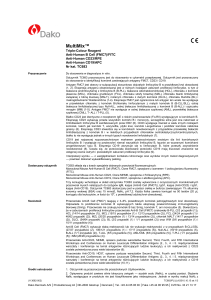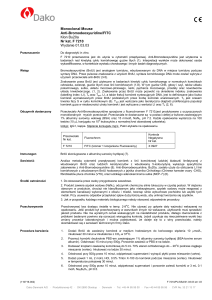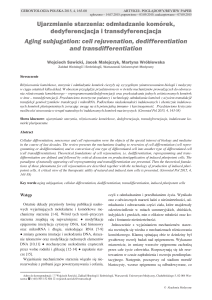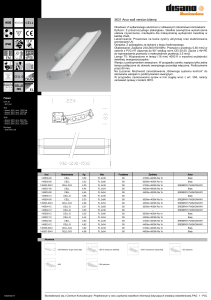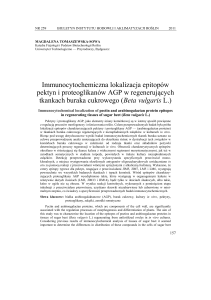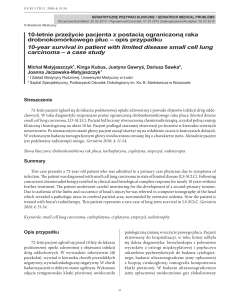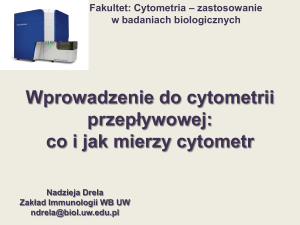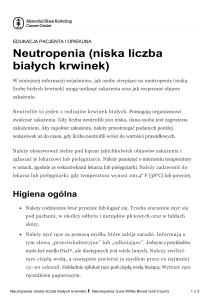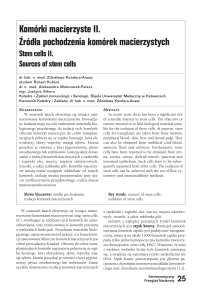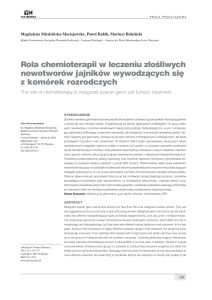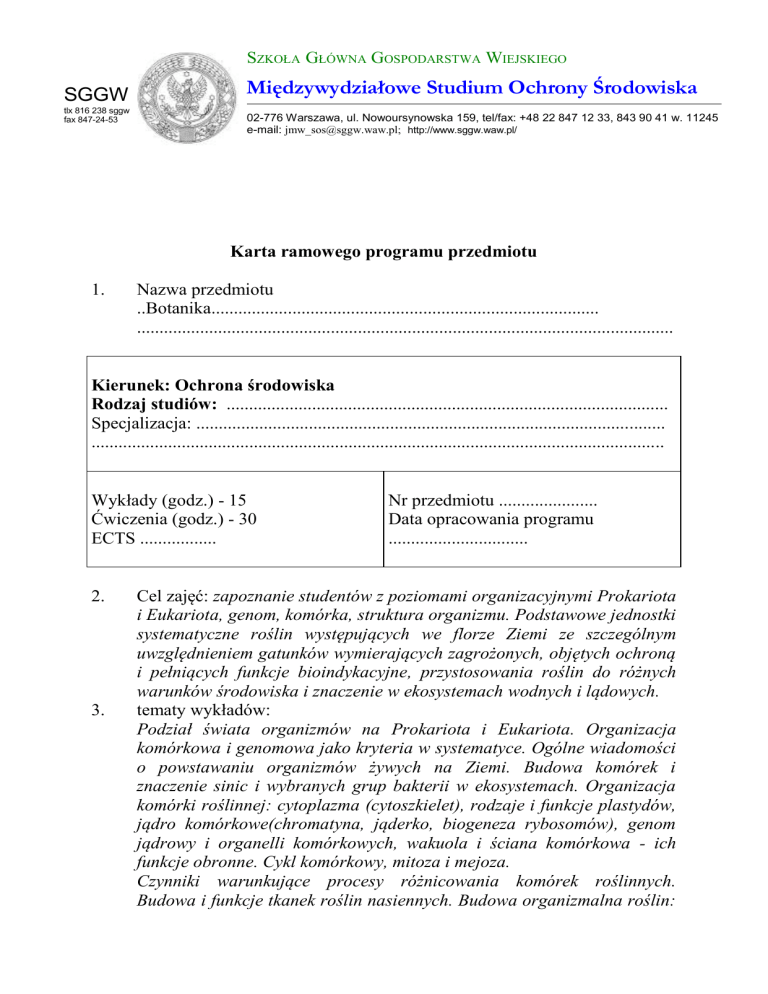
SZKOŁA GŁÓWNA GOSPODARSTWA WIEJSKIEGO
Międzywydziałowe Studium Ochrony Środowiska
SGGW
tlx 816 238 sggw pl
fax 847-24-53
02-776 Warszawa, ul. Nowoursynowska 159, tel/fax: +48 22 847 12 33, 843 90 41 w. 11245
e-mail: [email protected]; http://www.sggw.waw.pl/
Karta ramowego programu przedmiotu
1.
Nazwa przedmiotu
..Botanika......................................................................................
.......................................................................................................................
Kierunek: Ochrona środowiska
Rodzaj studiów: ..................................................................................................
Specjalizacja: ........................................................................................................
...............................................................................................................................
Wykłady (godz.) - 15
Ćwiczenia (godz.) - 30
ECTS .................
2.
3.
Nr przedmiotu ......................
Data opracowania programu
...............................
Cel zajęć: zapoznanie studentów z poziomami organizacyjnymi Prokariota
i Eukariota, genom, komórka, struktura organizmu. Podstawowe jednostki
systematyczne roślin występujących we florze Ziemi ze szczególnym
uwzględnieniem gatunków wymierających zagrożonych, objętych ochroną
i pełniących funkcje bioindykacyjne, przystosowania roślin do różnych
warunków środowiska i znaczenie w ekosystemach wodnych i lądowych.
tematy wykładów:
Podział świata organizmów na Prokariota i Eukariota. Organizacja
komórkowa i genomowa jako kryteria w systematyce. Ogólne wiadomości
o powstawaniu organizmów żywych na Ziemi. Budowa komórek i
znaczenie sinic i wybranych grup bakterii w ekosystemach. Organizacja
komórki roślinnej: cytoplazma (cytoszkielet), rodzaje i funkcje plastydów,
jądro komórkowe(chromatyna, jąderko, biogeneza rybosomów), genom
jądrowy i organelli komórkowych, wakuola i ściana komórkowa - ich
funkcje obronne. Cykl komórkowy, mitoza i mejoza.
Czynniki warunkujące procesy różnicowania komórek roślinnych.
Budowa i funkcje tkanek roślin nasiennych. Budowa organizmalna roślin:
organy wegetatywne, budowa, ich funkcje i modyfikacje w różnych
warunkach środowiska i organy generatywne roślin okrytozalążkowych.
Wybrane grupy systematyczne roślin: glonów jedno- i wielokomórkowych,
gromady Telomophyta: mszaki, widłakowe, skrzypowe, nagozalążkowe
wielko- i drobnolistne i okrytozalążkowe. Rośliny chronione w Polsce.
Ćwiczeń:
4.
5.
6.
7.
8.
9.
Warunki zaliczenia przedmiotu: egzamin pisemny testowy
Efekty kształcenia – nabyte umiejętności i kompetencje: rozumienie
procesów biologicznych na różnych poziomach organizacji, umiejętność
obserwacji mikroskopowych, identyfikacji składników chemicznych w
komórkach, rozpoznawaniai klasyfikacji podstawowych grup organizmów,
posługiwanie się kluczami do oznaczania gatunków (klasycznymi i
komputerowymi)
Autorzy programu ramowego: dr hab. Grażyna Garbaczewska, prof. nadz.
Wydział: Wydział Rolnictwa i Biologii, Katedra Botaniki
Wymagane pomoce dydaktyczne: mikroskopy, lupy, barwniki, klucze do
oznaczania roślin klasyczne i komputerowe
Literatura:
A.i J. Szweykowski –„ Botanika” 1i 2 tom. PWN
Wojtaszek P. i in. „ Podstawy biologii komórki roślinnej” t.1 PWN
Informacja o przedmiocie w języku angielskim:
1. Subject name Botany
2. Lecture topic:
From Procaryota to Eucaryota- division of organism world. Importance of
cell and genom organization in classification of living organisms. The evolution
of the live - principal information. Cell structure and role of Cyanobacteria and
other Eubacteria in their environmental.
Organization of plant cell: cytoplasm (cytoskeleton), types and functions of
plastids, nucleus (chromatin, nucleolus, biogenesis of ribosomes, vacuole and
cell wall-chemical structure and functions. Cell cycle, mitosis and meiosis.
Plant cell mechanisms of differentiation. Structure and function of plant
tissues.Vegetative body of the plant, structure, functions and modyfications
related with environmental conditions. Origin, structure and functions of
generative organs of angiospermous plant.
Characteristics of some groups of algae and Telomophyta- Bryophyta,
Lycopsida, Sphenopsida, Gymnospermae and Angiospermae.
Protected plants in Poland.
/practices topic
1. Observation structure of epiderma cell from Allium cepa. Plasmolysis of the
red onion cell. Changes of the coloration of vacuole sap in red onion cell.
Chloroplasts and cytoplasm movement in Elodea canadensis cell
2. Ergastics substances in plant cell and their identification. Reserved
substances in endosperm Triticum aestivum L. - identyfication with Lugol fluid.
Identification of cellulose and lignin in cell wall of the stem Cucurbita pepo and
S. tuberosum. Mitosis in root meristem of onion cells.
3. Stomata in leaf epidermis of Iris sp. Mechanical and secretory trichomes
(hairs) in abaxial part of the leaf of Pelargonium zonale. Secretory trichomes of
Urtica dioica. Target-shaped hairs of Verbascum sp.
4. Periderm with lenticels on the stem of Sambucus nigra. Vascular tissue on
longitudinal section of pumpkin stem: types of vessels, sieve tubes with
companion cell. Vascular bandle incroos section of the stem of Zea mays.
5. Colloqium: cytology and histology.
Morphological structure of Aesculus hippocastanum shoot. Structure of the
Faba vicia stem meristem. Primary and secondary structure of Aristolochia
stem.
6. Morphological and anatomical structure of Fagus silvatica leaf.
External and internal structure of Triticum aestivum leaf. Morphological
structure of Triticum aestivum root. Primary and secondary root structure.
7. Colloqium-anatomy of Angiospermae.
Cyanobacteria coloniaes and multiplication- Nostoc sp. Procaryota cell
ultrastructure. Cell structure of Baccillariophyceae and multiplication.
Cell structure of Chlorophyta and multiplication: Chloroccocus and Spirogyra
8. Fucus vesiculosus morphological structure and multiplication.
Polytrichum communae morphological structure and multiplication.
Lycopodium clavatum morphology and multiplication.
9. Equisetum arvense: morphology and multiplication.
Pinus silvestris: morpholology of generative organs: inflorescens and flowers,
ovules and stamen. The semence structure.
10. Flower structure of Brassica napus-on longitudinal and cross section of bud
flower, diagram. Anatomy of stamen and ovary, ovule and development of sac
ovule.
11. Embryo development. Semence structure. Fruits structure.
12-13. Characteristics of Magnoliopsida- Rannunculaceae, Rosaceae,
Fabaceae, Asteraceae, Lamiaceae, Lilliaceae, Poaceae.
14. Visit in Botanical Garden in Powsin.
15. Colloqium-Classification and characteristic Magnoliopsida plants and
embryology.

